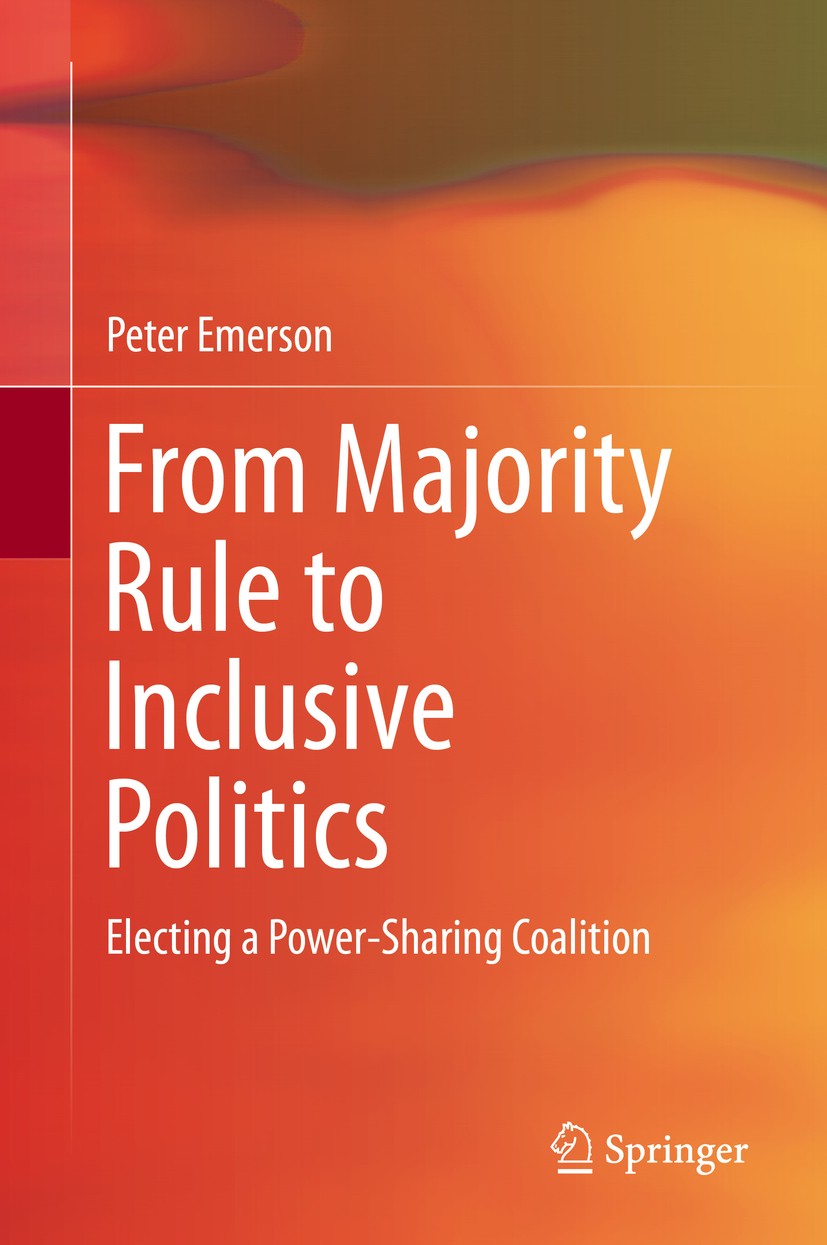| 書目名稱 | From Majority Rule to Inclusive Politics | | 編輯 | Peter Emerson | | 視頻video | http://file.papertrans.cn/349/348775/348775.mp4 | | 概述 | Offers a complete guide on electing majority or all-party, power-sharing coalitions.Gives examples, clearly depicted in tables, to illustrate the different voting procedures.Shows how to achieve conse | | 圖書封面 |  | | 描述 | .This book discusses voting procedures in collective decision-making. Drawing on well-established election processes from all over the world, the author presents a voting procedure that allows for the speedy but fair election of a proportional, all-party coalition. The methodology - a matrix vote - is accurate, robust and ethno-color blind. In the vote, the counting procedure encourages all concerned to cross the gender as well as any party and/or sectarian divides. ?While?in the?resulting executive each party will be represented fairly and,?at best, with the consensus of parliament, every minister will be the one most suited to his/her new portfolio. By using?preferential voting and thus?achieving consensus, the matrix vote will be fundamental to the resolution of conflicts..The matrix vote can also be used when:.??? two or more parliamentary parties elect a coalition government.??? one?parliamentary?party elects a government or shadow cabinet, or organizations in civil society elect their governing boards or executive committees.??? any group chooses a fixed number of individuals to form a team in which each member carries out a different function. | | 出版日期 | Book 2016 | | 關(guān)鍵詞 | Collective Decision-Making; Conflict Resolution; Matrix Vote; Peace-Making; Power-Sharing; Preferential V | | 版次 | 1 | | doi | https://doi.org/10.1007/978-3-319-23500-4 | | isbn_softcover | 978-3-319-79493-8 | | isbn_ebook | 978-3-319-23500-4 | | copyright | Springer International Publishing Switzerland 2016 |
The information of publication is updating

|
|
 |Archiver|手機(jī)版|小黑屋|
派博傳思國(guó)際
( 京公網(wǎng)安備110108008328)
GMT+8, 2025-10-14 22:27
|Archiver|手機(jī)版|小黑屋|
派博傳思國(guó)際
( 京公網(wǎng)安備110108008328)
GMT+8, 2025-10-14 22:27


